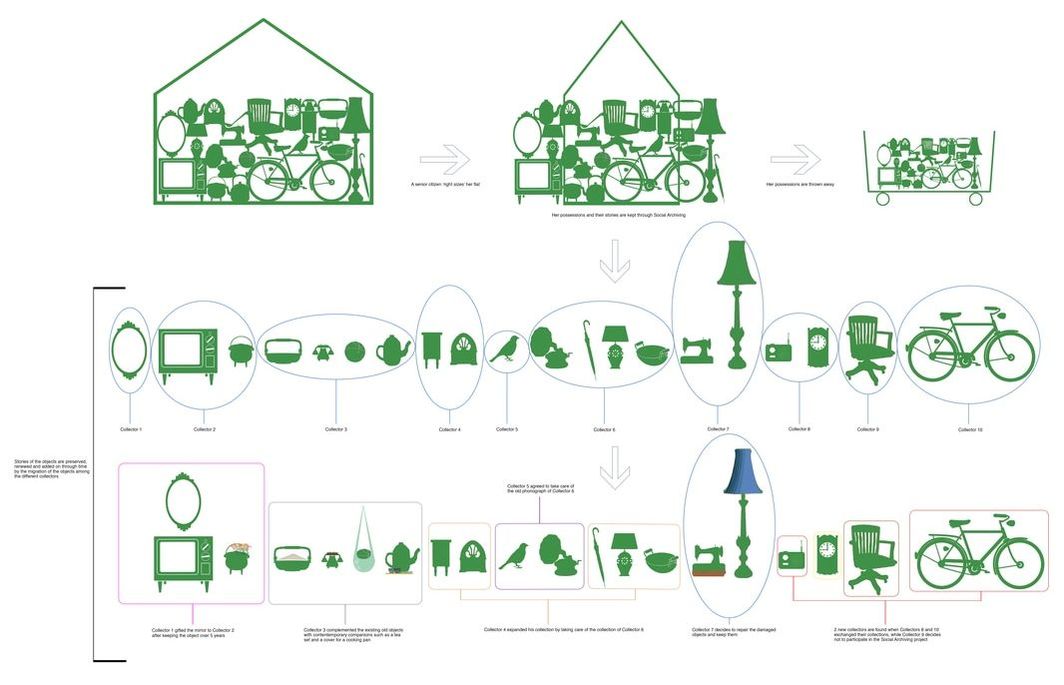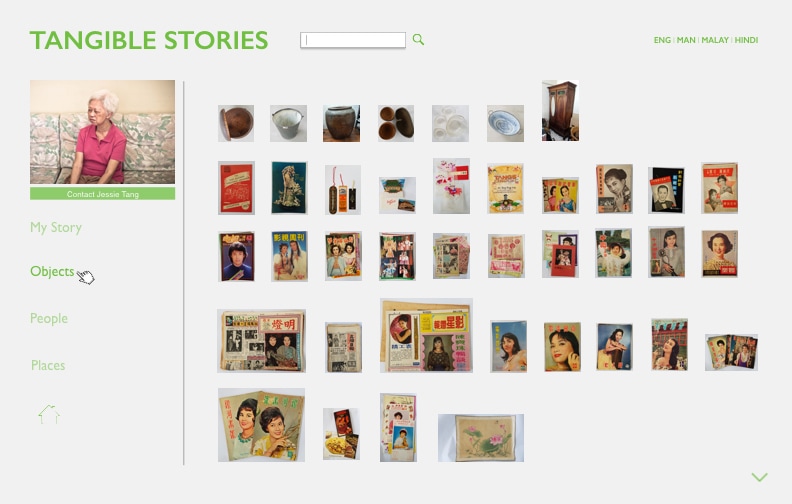|
"...it is not when part of the self is inhibited and restrained, but when part of the self is given away, that community appears."
Lewis Hyde. The Gift: Creativity and the Artist in the Modern World. Social Archiving explores a new form of archiving that combines gift giving, safekeeping, curating, placemaking and a renewal of the life of a collection through a simple in-person ritual and a digital interface for sustaining the social life of the collection nationally and beyond. I conceived of Social Archiving as a new model of caring for objects and ephemera that carry cultural and heritage value. It is a platform for intergenerational learning in-place and online, public stewardship and the building of a personal legacy through the sharing of the stories related to the archived materials. Social archiving was motivated by the diminishing size of an elderly’s home and a rapidly aging population in the city-state. Social Archiving draws from the rich tradition of archiving as an art form and differs from current institutional model of archiving in the following ways: 1. It is interdisciplinary. The process in itself constitutes a participatory form of art-making and sharing. 2. Although Social Archiving has a precedent in the rich tradition of archival art, it does not rest purely as a one off art project. Social Archiving helps in the crafting of interactions and relational structures in the design of spatial strategies to address contemporary urban concerns. Specific to this proposal are the issues of aging in place, personal legacy, identity, community forming and the spaces that support them. 3. It relies on the interest, passion, care and housing offered by a community of volunteer archivists/collectors/curators instead of the control and management of an institution. 4. It promotes social interaction, both digital and in real time in the archival process. 5. It encourages active, creative re-interpretation and curating of the archived materials that extends beyond the passive role of offering a storage space. 6. It recognizes the role social media plays maintaining contact between archivists, between the original owner and the new collector, and in the organization, dissemination and sharing of the archived materials. 7. It permits the transferring of the archived materials if the new collector agrees to the role and expectations. 8. It is a scalable process that can range from an intimate social setting to a large, community-level interaction. The populations of Asia and Western Europe are rapidly aging and 60% of the world's population is in Asia. Although the project is situated in Singapore, the issues, challenges and opportunities surrounding aging are global while the initiatives to address this rising societal phenomenon are potentially transferable to other nations. (https://www.washingtonpost.com/local/social-issues/what-singapores-plan-for-an-aging-population-can-teach-the-us/2015/11/01/f86e9596-7f42-11e5-b575-d8dcfedb4ea1_story.html) Singapore is a particularly important case study because it has one of the world's fastest aging population. Over 80% of its population lives in high rise public housing given the limited land available for development. As the government encourages its citizens to see their apartments as economic assets, it is not uncommon for many to sell, buy and live in several apartments over their lifetimes. Each move generates bigger profits that serve as their retirement nest eggs. Through my encounter with the senior citizens in the course of the Tangible Stories project, I foresee the Social Archiving project can take on a significant role in the social and cultural landscape of Singapore based on the following reasons: 1. As more and more senior residents move into nursing and retirement homes, as well as smaller studio apartments, they are confronted by the challenge of holding on to their cherished possessions acquired over the years. These possessions include furniture, objects for daily use and print materials that house strong memories for them. Unfortunately, many senior citizens have to either sell or throw them away now, especially if they are single or do not have children to pass these objects and materials to. Moreover, some of their children may not be keen to take over their parents’ possessions. 2. Given the unceasing urban transformation and the rapidly aging population in the city-state, many grassroots level memories are lost despite the attempts to collect them through the massive, national-level Singapore Memory Project. Social archiving offers a more intimate platform for intergenerational learning and remembering through the sharing of the stories related to the archived materials. As Arthur C. Brooks in his Op-Ed piece for the New York Times wrote. "One million is a statistic. One is a human story." 3. As more and more studio flats are designed within existing and matured housing estates, there is an urgent need to give greater consideration to the design of public spaces that promotes aging in community. Besides design considerations such as universal access, elder friendly interiors, etc., the provision of spaces and the holding of community events that help anchor personal memories of place can be promoted through social archiving. Partners: Jacelyn Kee; Lee Sze-Chin; Asian Film Archive; Tangs Holdings; Tsao Foundation. Comments are closed.
|
Archives
August 2023
Categories
All
|








 RSS Feed
RSS Feed
